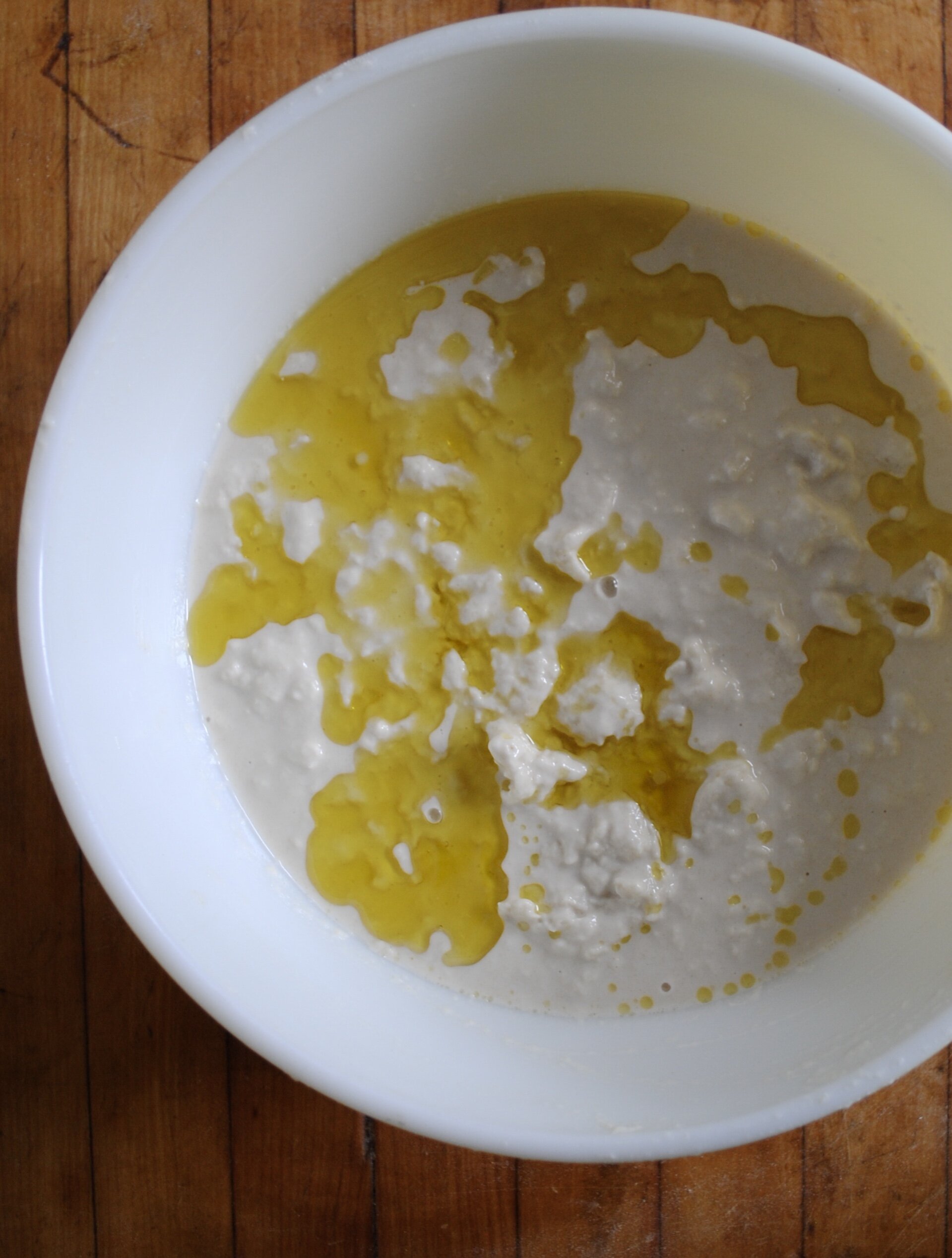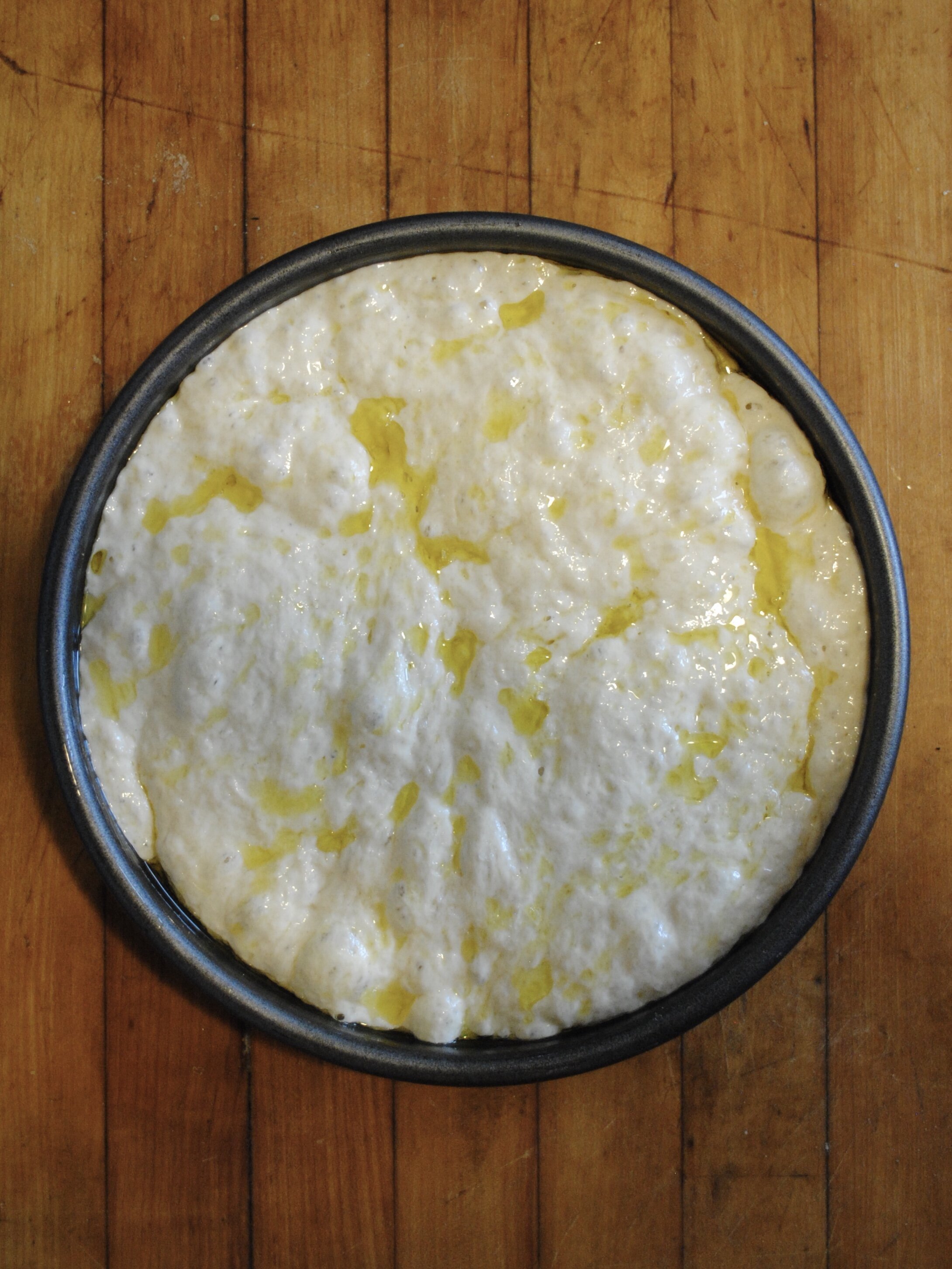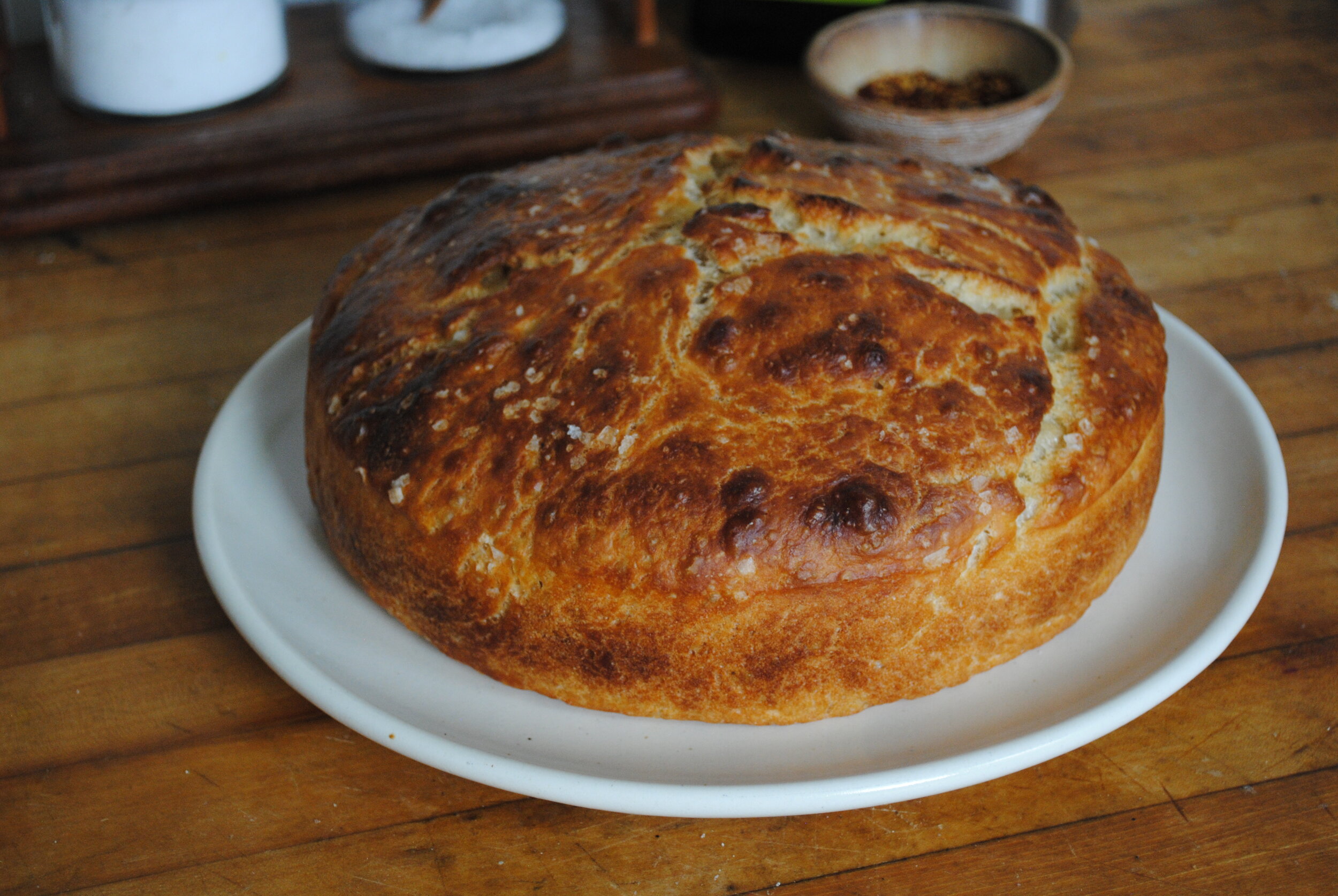An Accidental Round Focaccia
Added too much salt in the cookie batter by accident? Forgot to add the baking powder and your left with a brick of a cake? Poured too much water to the focaccia’s yeast? We’ve all been there but sometimes you’re pleasantly surprised. Recently I made that last mistake by adding too much liquid.
I was trying out Samin Nostrat’s recipe for Ligurian focaccia and in an instant I knew something was wrong. The dough looked way too wet and clumpy. It wasn’t that tender, soft dough that was supposed to glisten with the olive oil while it sits out and ferments. I instantly set it aside and started over. The next day though, after both of my focaccia ‘babies’ were still there, I decided to bake them both off and see what would come of my first little monster against Nostrat’s tried and true recipe. It was too wet to pour in a sheet pan which meant i had to skip the second proofing and stretching in her recipe. I decided to just pour the dough into a round baking pan, oil and salt and see what happens. When I was immediately surprised at how evenly it baked, the depth of flavor, the airy crumb and crunchy golden hue. I knew I had to try it out again and share this accidental boon.
One thing that may be obvious but try to avoid touching the dough at all with your hands; it’s way too wet and sticky and it’s best to use a large rubber spatula to work in all the liquid. Store the focaccia wrapped airtight in foil or parchment paper. you can reheat it in the oven the next day. Also, this focaccia makes stellar breadcrumbs that when toasted won’t need any extra fat. It’s already saturated with just enough olive oil.
Serves 6-8
An Accidental Round Focaccia
3 cups (720 grams) lukewarm water
1 tablespoon (18 grams) honey
½ teaspoon yeast
5 cups (750 grams) all-purpose flour
4 teaspoons sea salt
¼ cup extra-virgin olive oil, plus 2 tablespoons for finishing and pan
Flake salt or coarse sea salt for finishing
In a medium sized bowl add the lukewarm water, honey, and yeast and whisk together. Set aside and in a larger bowl mix the flour and salt well to combine.
In one hand slowly add water mixture to the flour and salt bowl, about a ½ cup at a time. With a rubber spatula fold liquid in. When you’re nearing the end of the water mixture, your dough should look like it’s gone beyond the amount of water it can absorb, it will be clumpy, It will look like chunky oatmeal even. It won’t look right. Normally I’d say this is wrong, but keep going and fold in the ¼ cup of olive oil. As the dough sits, the yeast starts eating and the dough will still ferment and become a little more cohesive looking. Once everything is incorporated, let the dough sit in the bowl, sealed with plastic wrap for 12-14 hours in a warm area of your kitchen. The focaccia dough should double in volume.
Preheat the oven to 425 degrees. Spread 1 tablespoon of olive oil on the bottom and sides of a 9-inch round non-stick or springform baking pan with 2-inch high sides. Pour the fermented dough into the pan, drizzle the last 1 tablespoon of olive oil and sprinkle flake salt or coarse sea salt.
Place the focaccia on the middle rack in the oven and back for 40-45 minutes, rotating halfway through until golden brown and a toothpick comes out clean. Once done, gently score the sides of the pan to separate the loaf if needed and invert it out onto a flat surface. Cut into slices and serve with more olive oil.




